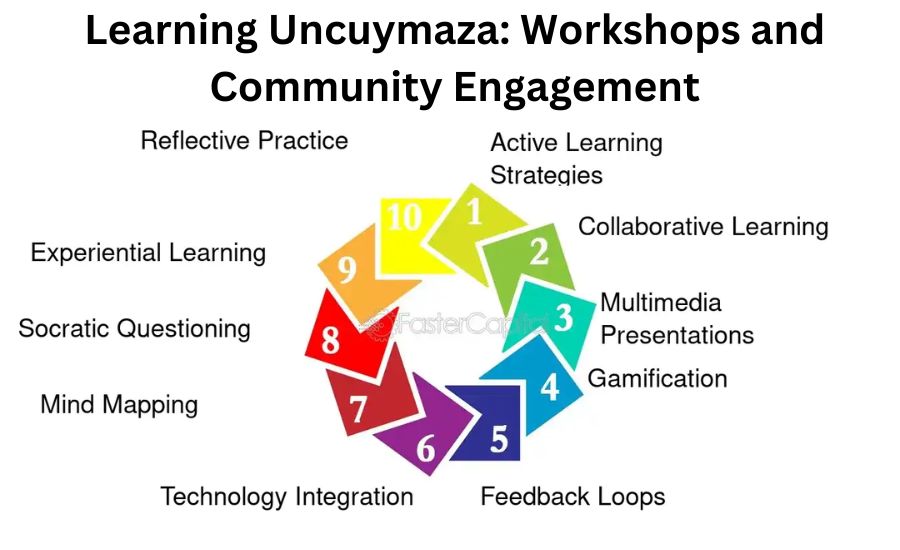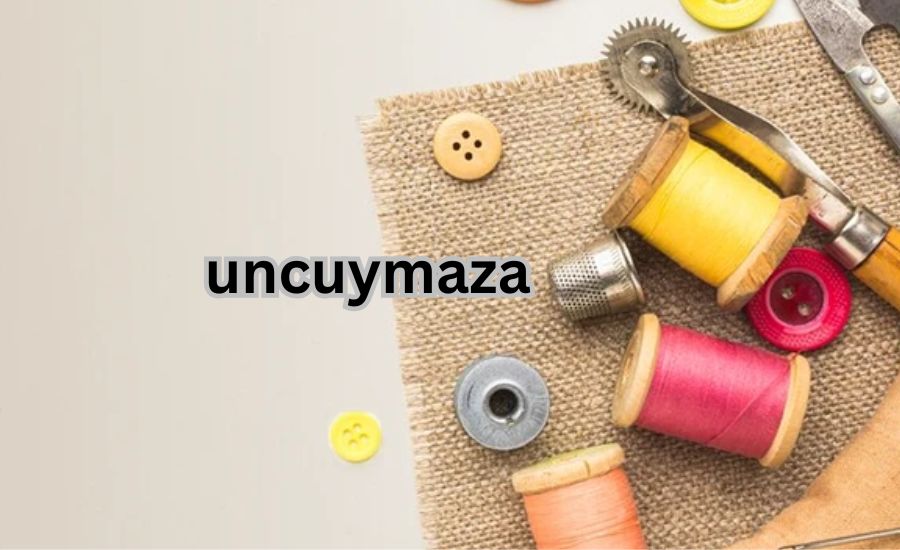Uncuymaza is a vibrant and meaningful art form that represents the rich cultural heritage of the Andean region. This traditional weaving technique is more than just creating fabric; it’s a storytelling medium that connects generations, history, and spirituality. Each piece of uncuymaza carries the essence of the land and its people, reflecting their beliefs and values through intricate patterns and vivid colors.
In today’s fast-paced world, the significance of uncuy maza remains steadfast. As artisans blend ancient techniques with contemporary influences, they breathe new life into this craft, ensuring its relevance for future generations. By exploring the artistry and cultural importance of uncuymaza, we can appreciate not only its beauty but also its role in preserving the identity and heritage of the Andean communities.
What is Uncuymaza? Understanding the Art of Weaving Culture
Uncuymaza is a special way of weaving that comes from the Andes mountains in South America. This craft is not just about making beautiful fabric; it tells stories and shares the history of the people who create it. Each piece of uncuymaza is full of meaning, showing the connection between the weavers and their ancestors.
Artisans use colorful threads and traditional techniques to make uncuy maza items. The colors they choose are important and often represent different things in nature, like the sky or the earth. This makes every piece unique and tells a different story. Uncuymaza helps keep the culture alive, passing down knowledge from one generation to the next.
When you look at a piece of uncuymaza, you can see the hard work and love that goes into it. The designs often reflect the land, animals, and beliefs of the Andean people. This is what makes uncuymaza a living part of their culture. It connects the past with the present, making sure that everyone remembers their roots.
The Historical Origins of Uncuymaza: A Journey Through Time
The history of uncuymaza goes back many centuries to the ancient Andean communities. These early weavers created textiles that were not just for clothing but also for rituals and ceremonies. The fabrics were often used as offerings to the gods or as signs of social status.
Over time, the techniques used in uncuy maza have changed, but the heart of the craft remains the same. Early weavers used natural materials like alpaca wool, which they dyed with plants and minerals. This method created vibrant colors that are still celebrated today.
As the Spanish colonization began, the art of uncuy maza faced many challenges. Many traditions were threatened, but the Andean communities worked hard to keep their weaving practices alive. They adapted and changed while holding onto the essential elements that make uncuymaza special. Today, this art form stands strong, blending old and new techniques to keep the tradition vibrant.
The Craftsmanship Behind Uncuymaza: Techniques and Materials
Creating uncuymaza requires skill, patience, and a deep understanding of the materials. Artisans begin by spinning natural fibers, like llama and alpaca wool, into threads. This is an important step, as the quality of the thread affects the final piece. After spinning, they dye the threads using natural pigments.
The backstrap loom is the main tool used in this craft. Artisans attach the loom to their bodies, using their own weight to create tension. This method connects them to the earth and makes the weaving process a spiritual experience. Each piece made on the backstrap loom is unique, reflecting the weaver’s personal touch.
Many designs feature geometric shapes and symbols that have cultural meaning. Artisans incorporate these symbols into their work to tell stories about their beliefs and heritage. This attention to detail is what sets uncuy maza apart from other weaving techniques. Each piece is not just fabric; it carries a part of the weaver’s identity.
Symbolism in Uncuymaza: Colors and Patterns That Tell Stories
Uncuymaza is rich in symbolism, with colors and patterns that convey deep meanings. Each piece created by artisans tells a story, reflecting their beliefs, culture, and connection to the land. Here are some key aspects of the symbolism in uncuymaza:
- Colors with Meaning:
- Earthy Reds and Browns: Represent the land and its fertility.
- Blues: Reflect the sky and water, symbolizing life and nourishment.
- Black: Indicates mystery, protection, and strength.
- Bright Hues: Show joy, celebration, and the vibrancy of Andean culture.
- Patterns as Narratives:
- Geometric Shapes: Often depict mountains, rivers, and other natural elements.
- Spirals: Represent the cycle of life and the connection between the past and future.
- Zigzags: Symbolize the journey of life, including challenges and triumphs.
- Animal Symbols: Reflect important figures in Andean mythology, showcasing respect for nature.
- Cultural Significance:
- Each design serves as a record of community history and identity.
- Patterns and colors link the weaver to their ancestors and cultural roots.
- The textile becomes a medium for storytelling, preserving traditions for future generations.
You May Also Like: Dealasty
The Role of Women in Uncuy maza: Guardians of Tradition

Women play a crucial role in the art of uncuymaza. They are often the main weavers in their communities, passing down skills and stories from mothers to daughters. This connection creates a strong bond between generations and helps keep the tradition alive.
Weaving is not just a craft for women; it is also a means of empowerment. By mastering the techniques of uncuymaza, women contribute to their families and communities, both culturally and economically. This helps ensure that their heritage continues to thrive in the modern world.
In many cases, women weave not just for personal use but also to sell their creations. This allows them to support their families while preserving their cultural identity. By embracing their role in uncuy maza, women celebrate their heritage and inspire future generations to appreciate and practice this beautiful art form.
Uncuymaza in Modern Times: Balancing Tradition and Innovation
Today, uncuymaza faces new opportunities and challenges. Many artisans blend traditional techniques with modern designs to create pieces that appeal to today’s market. This mix helps keep the craft relevant while honoring its rich history.
As interest in sustainable and ethical fashion grows, uncuymaza is gaining attention worldwide. Artisans are finding new ways to showcase their work, collaborating with designers and artists to reach a broader audience. This partnership ensures that uncuy maza continues to thrive in a global market.
Despite these changes, artisans remain committed to their roots. They work hard to maintain the cultural significance of uncuymaza, ensuring that it remains a vital part of Andean identity. This balance between tradition and innovation is essential for the craft’s future.
Challenges Facing Uncuymaza Artisans: Preserving Heritage in a Changing World
Uncuymaza artisans face several challenges as they work to preserve their cultural heritage in a rapidly changing environment. These difficulties can impact the craft’s survival and the livelihoods of those who create it. Here are some of the major challenges:
- Competition from Mass Production:
- Lower Prices: Mass-produced textiles often cost less than handcrafted uncuy maza, making it hard for artisans to compete.
- Quality Perception: Many consumers may choose cheaper options without recognizing the value of handmade items.
- Rising Costs of Materials:
- Increased Expenses: The prices for natural fibers and dyes have risen, putting financial pressure on artisans.
- Access to Resources: Finding quality materials can be difficult, especially in remote areas.
- Declining Interest Among Younger Generations:
- Changing Career Preferences: Many young people are more attracted to modern careers and may not see the value in traditional crafts.
- Loss of Skills: As fewer young artisans learn the craft, valuable skills and knowledge may be lost over time.
- Market Access Issues:
- Limited Exposure: Many artisans struggle to reach broader markets, limiting their ability to sell their work.
- Need for Support: Without the backing of fair trade organizations or marketing assistance, artisans may find it challenging to thrive.
- Cultural Symbolism at Risk:
- Commercialization: Increased demand can lead to the commercialization of cultural symbols, diluting their meanings.
- Authenticity Concerns: There’s a risk that traditional methods may be overlooked in favor of quicker, more profitable approaches.
Global Recognition of Uncuymaza: Celebrating Cultural Heritage Worldwide
In recent years, uncuymaza has gained international attention, highlighting the importance of preserving indigenous crafts. Many exhibitions and cultural events showcase this art form, helping to educate people about its significance and the skill involved in creating it.
Organizations and artisan groups are working hard to promote uncuy maza globally. By raising awareness, they help protect the rights of the artisans and their traditional expressions. This recognition not only honors the craft but also supports the communities that rely on it for their livelihood.
As demand for authentic handcrafted textiles grows, uncuymaza offers economic opportunities for artisans. This success allows them to continue their traditions while also gaining recognition on the world stage. The journey of uncuymaza from local craft to global treasure is a testament to the resilience of Andean culture.
How to Support Uncuymaza: Engaging with Ethical Craftsmanship
Supporting uncuy maza means more than just purchasing items; it involves engaging with the artisans and understanding their stories. By choosing to buy directly from artisans or fair-trade organizations, you contribute to the preservation of this valuable craft.
You can also participate in workshops and community events that promote uncuy maza. These experiences not only teach you about the craft but also connect you with the culture and traditions of the Andean people. Learning the techniques firsthand can deepen your appreciation for this art form.
Sharing knowledge and awareness of uncuy maza with others is another way to support it. By discussing its significance and promoting ethical craftsmanship, you can help keep the tradition alive. Each small action contributes to the larger movement of cultural preservation.
Learning Uncuymaza: Workshops and Community Engagement

Learning uncuymaza is a fantastic way to connect with Andean culture. Many communities offer workshops where you can try your hand at this beautiful craft. In these sessions, skilled artisans teach you how to spin fibers, dye them with natural pigments, and weave on a backstrap loom.
These workshops are not just about skills; they also share stories and traditions passed down through generations. Participating supports local economies and helps keep the craft alive. Community events and festivals celebrating uncuy maza bring people together, creating a space for sharing and appreciating this art form.
Uncuymaza and Eco-Friendly Practices: A Sustainable Craft
Uncuymaza is a sustainable craft that respects the environment. Artisans use natural materials, such as alpaca wool and cotton, which are renewable. They dye their threads with plants and minerals instead of synthetic chemicals, promoting eco-friendly practices.
Many weavers perform rituals to honor the earth before creating new pieces. The demand for sustainable fashion has increased interest in uncuy maza, as modern designers collaborate with artisans to highlight this eco-conscious craft. Choosing uncuymaza supports both artistry and environmental responsibility.
Celebrating Diversity Through Uncuymaza: Embracing Unique Identities
Uncuymaza celebrates the diversity and unique identities of the Andean people. Each woven piece tells a different story, representing the cultural heritage and values of its creator. The designs often reflect local symbols and historical narratives, preserving cultural traditions for future generations.
As more people engage with uncuymaza, it fosters inclusivity and understanding. Artisans invite individuals from diverse backgrounds to learn about their craft, promoting respect for cultural differences. Celebrating diversity through uncuymaza enriches our world and ensures that all traditions are valued.
The Future of Uncuymaza: Sustainability and Cultural Resilience
The future of uncuymaza looks promising as more people embrace sustainable practices. Artisans are increasingly focusing on eco-friendly materials and methods, ensuring that their work respects the environment. This shift not only meets modern demands but also aligns with traditional values of harmony with nature.
Educational initiatives are also helping to revive interest in the craft among younger generations. By teaching uncuymaza in schools and communities, we can inspire the next generation of artisans to carry on this important tradition.
Through collaboration with global markets and fair-trade organizations, artisans can achieve fair compensation for their work. This support is vital for the continued practice and appreciation of uncuymaza. With ongoing recognition and support, this beautiful craft will continue to thrive for years to come.
Conclusion
Uncuymaza is more than just a weaving technique; it represents a rich cultural legacy that connects generations and tells stories. As we appreciate the beauty and significance of uncuymaza, we also recognize the hard work and dedication of the artisans who create these pieces.
Supporting uncuymaza is essential for preserving the culture and identity of the Andean people. By choosing to engage with this art form, you become part of a vibrant legacy that transcends time. Let us celebrate the artistry and craftsmanship of uncuymaza, ensuring that its stories continue to be told for future generations.
Navigate the Latest Trends with LiveMintPro Fresh Content
FAQS
Q: What is uncuymaza?
A: Uncuymaza is a traditional Andean weaving technique that creates colorful textiles rich in cultural symbolism and storytelling.
Q: What materials are used in uncuymaza?
A: Artisans typically use natural fibers like alpaca and llama wool, along with plant-based dyes to create vibrant colors for their weavings.
Q: How does uncuymaza symbolize Andean culture?
A: The patterns and colors in uncuymaza textiles represent the land, beliefs, and history of the Andean people, serving as a visual language that preserves their cultural heritage.
Q: Are there workshops available to learn uncuymaza?
A: Yes, many communities offer workshops where participants can learn the art of uncuymaza, gaining hands-on experience and knowledge about this traditional craft.
Q: What challenges do uncuymaza artisans face today?
A: Artisans encounter challenges such as competition from mass-produced textiles, rising material costs, declining interest among younger generations, and limited market access.





